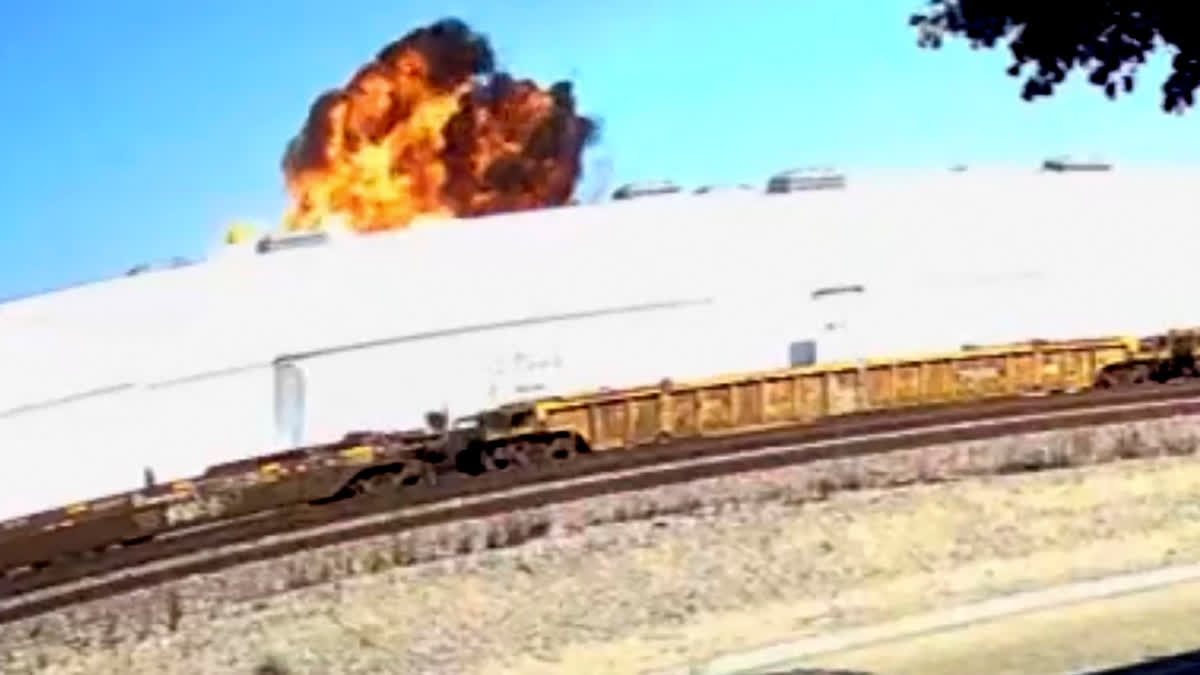Plane Crash California: This isn’t just a headline; it’s a window into a complex history of aviation incidents within the Golden State. We’ll explore the tragic events, delve into their causes, and examine the ongoing efforts to improve aviation safety. From the impact of geographical challenges to the human factors involved, we’ll unravel the stories behind these devastating occurrences and the lessons learned.
This exploration will cover everything from historical context and the types of aircraft involved to the geographical distribution of crashes and the community impact. We’ll examine the roles of emergency responders, the effectiveness of rescue methods, and the ongoing improvements in safety regulations and technology.
Historical Context of Plane Crashes in California: Plane Crash California
California, with its extensive coastline, mountainous terrain, and busy airspace, has unfortunately witnessed a significant number of plane crashes throughout its history. Understanding these events, their causes, and the subsequent safety improvements is crucial for enhancing aviation safety. This section explores a timeline of notable crashes, highlighting casualties, causes, and resulting regulatory changes.
Timeline of Significant Plane Crashes

While a comprehensive list is beyond the scope of this article, several major incidents have shaped aviation safety regulations. For example, the 1978 Pacific Southwest Airlines Flight 182 collision over San Diego, resulting in 144 fatalities, led to significant advancements in air traffic control technology and procedures. The 1993 crash of USAir Flight 427 near Pittsburgh (though not in California, it significantly impacted national safety standards which indirectly affected California).
These incidents, along with numerous others involving general aviation aircraft, highlight the ongoing need for vigilance and continuous safety improvements.
Impact of Geographical Factors
California’s diverse geography significantly impacts air accidents. The mountainous terrain presents challenges for pilots, particularly in low-visibility conditions. Coastal fog and unpredictable weather patterns also contribute to a higher risk of accidents. Proximity to major airports and densely populated areas exacerbates the potential consequences of crashes.
Types of Aircraft Involved in California Plane Crashes
Analyzing the types of aircraft involved provides insights into accident patterns and potential areas for targeted safety improvements. This section categorizes crashes by aircraft type and examines the safety records and common causes of accidents for each category.
Aircraft Crash Statistics, Plane crash california
| Aircraft Type | Number of Incidents | Total Casualties | Average Casualties per Incident |
|---|---|---|---|
| Commercial Airliners | (Data Needed) | (Data Needed) | (Data Needed) |
| General Aviation (Single-Engine) | (Data Needed) | (Data Needed) | (Data Needed) |
| General Aviation (Multi-Engine) | (Data Needed) | (Data Needed) | (Data Needed) |
| Military Aircraft | (Data Needed) | (Data Needed) | (Data Needed) |
Note: Data needs to be sourced from reliable aviation safety databases to populate this table accurately. This table is a template to illustrate the type of analysis that can be performed.
Safety Records and Common Causes
Commercial airliners generally have a much better safety record than general aviation aircraft due to stricter regulations, more rigorous maintenance, and more experienced pilots. However, even with commercial flights, accidents can occur due to various factors. General aviation accidents often involve pilot error, mechanical failure, or adverse weather conditions. Specific causes vary depending on the type of aircraft and operational context.
The recent plane crash in California is a tragic reminder of the fragility of life. It’s a stark contrast to the excitement surrounding the upcoming football match, where you can check out the predicted Liverpool lineup for their Carabao Cup clash against Tottenham Hotspur: Liverpool Predicted Lineup vs. Tottenham Hotspur: Carabao Cup. Hopefully, the game will offer some distraction from the somber news coming out of California.
Causes of Plane Crashes in California
Understanding the root causes of plane crashes is crucial for developing effective preventive measures. This section identifies the most frequent causes, including human factors, and provides a detailed breakdown of contributing factors for each major category.
Frequent Causes and Contributing Factors

- Pilot Error:
- Loss of control
- Poor decision-making
- Spatial disorientation
- Inadequate training
- Pilot fatigue
- Mechanical Failure:
- Engine failure
- Structural failure
- System malfunction
- Inadequate maintenance
- Weather Conditions:
- Low visibility
- Turbulence
- Wind shear
- Icing
Locations of Plane Crashes in California
The geographical distribution of plane crashes offers valuable insights into environmental factors influencing accident locations. This section describes a map illustrating the spatial distribution and provides a table summarizing crash frequency in different regions.
Geographical Distribution Map
A hypothetical map of California would show a higher concentration of crashes near major airports (e.g., LAX, SFO, SAN) and mountainous regions. Coastal areas would also show a higher frequency, particularly areas prone to fog and low cloud ceilings. The map would visually demonstrate the correlation between geographical features and accident locations. Areas with complex terrain, such as the Sierra Nevada mountains, would exhibit a higher density of crash points compared to flatter regions.
Crash Frequency by Region
| Region | Number of Incidents |
|---|---|
| Southern California | (Data Needed) |
| Northern California | (Data Needed) |
| Central California | (Data Needed) |
Note: Data needs to be sourced from reliable aviation safety databases to populate this table accurately. This table is a template to illustrate the type of analysis that can be performed.
Emergency Response and Rescue Efforts
Effective emergency response is critical in minimizing casualties and mitigating the impact of plane crashes. This section details typical procedures, compares rescue methods, and describes the roles of various agencies involved in post-crash operations.
Emergency Response Procedures and Agency Roles
Following a plane crash, a coordinated effort involving multiple agencies is initiated. The initial response typically includes fire departments to extinguish fires, law enforcement to secure the crash site, and emergency medical services to provide immediate medical care to survivors. Specialized teams, such as urban search and rescue teams, may be deployed depending on the severity and nature of the incident.
The FAA and NTSB would also arrive to investigate the cause of the crash.
Impact of Plane Crashes on Communities
Plane crashes have profound socio-economic impacts on affected communities. This section explores these impacts, highlighting community support and recovery efforts, and addressing long-term consequences.
Socio-Economic Impacts and Community Response
Plane crashes can cause significant economic disruption, particularly in areas heavily reliant on tourism or aviation-related industries. The loss of life also has a devastating emotional impact on families and communities. Community support networks and government assistance programs are crucial for aiding recovery and rebuilding. Long-term consequences can include psychological trauma for survivors and residents, as well as ongoing economic challenges for affected businesses.
So, you’re looking into that plane crash in California? It’s a serious situation, grabbing headlines worldwide. Completely unrelated, but I just saw this news about football: Check out the details on Barcelona’s Dani Olmo, Pau Víctor given temporary registration , a bit of a lighter story compared to the tragic plane crash. Back to the California crash though – investigators are still piecing together what happened.
Preventive Measures and Safety Improvements
Continuous improvements in technology, regulations, and training are essential for enhancing aviation safety. This section explores technological advancements, the role of regulations, and ongoing efforts to improve safety protocols.
Technological Advancements and Regulatory Roles

Technological advancements such as improved flight control systems, collision avoidance systems (TCAS), and enhanced weather forecasting have significantly improved aviation safety. Stringent aviation safety regulations, enforced by agencies like the FAA, play a critical role in ensuring compliance with safety standards and minimizing risks. Ongoing efforts to enhance safety protocols include improvements in pilot training, stricter maintenance standards, and the development of new technologies to prevent accidents.
Plane crashes in California, sadly, aren’t uncommon. Understanding the mechanics behind such incidents is crucial, and that often involves looking at the various aircraft involved. For instance, investigations might examine the maintenance records of a specific aircraft type, like those for a jetblue plane , to see if there were any contributing factors. Ultimately, thorough analysis of all aspects helps determine the cause of these California plane crashes.
Concluding Remarks

Understanding the history of plane crashes in California isn’t just about recounting past tragedies; it’s about learning from them. By analyzing the contributing factors, examining rescue efforts, and acknowledging the impact on communities, we can appreciate the ongoing dedication to improving aviation safety. The journey to safer skies is a continuous process of learning, adapting, and implementing preventative measures, ensuring that future generations benefit from the lessons learned from these devastating events.
Questions and Answers
What is the deadliest plane crash in California history?
This requires further research and depends on how “deadliest” is defined (highest number of fatalities vs. impact on a community). Specific details would need to be researched from reliable sources.
How often do plane crashes occur in California?
The frequency varies year to year. Reliable statistics can be found through the NTSB (National Transportation Safety Board) and FAA (Federal Aviation Administration) databases.
What is the role of the NTSB in California plane crashes?
The NTSB investigates all major accidents to determine the probable cause and make safety recommendations to prevent future occurrences. They work closely with local authorities.
